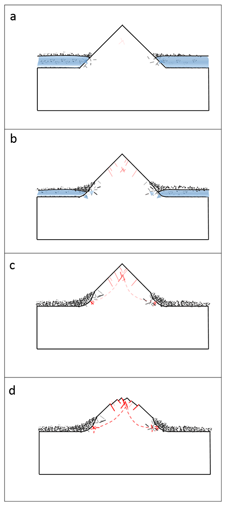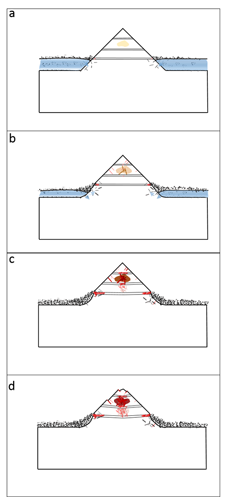
Magdalena Makowska

margdalena.makowska twarda.pan.pl
twarda.pan.pl
Research
topics
Research
My name is Magda Makowska and I am a member of WROONA group since January 2012. My work in the project focusing on mechanical approach of Deep-Seated Gravitational Spreading (DSGS) on examples from Valles Marineris on Mars (Fig. 1).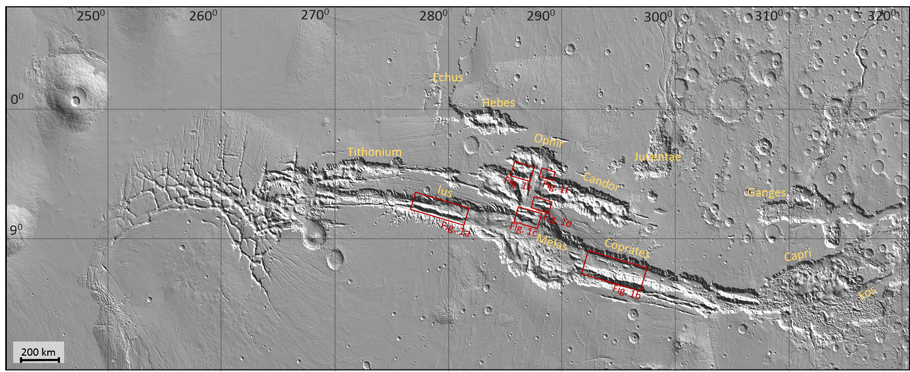
Fig. 1 Location of the main chasmata in Valles Marineris with the major gravitational spreading occurrences.
In fact DSGS is still not well
undertsood, has described by many authors in different ways buy
generally we may say that this is a very slow mass movements,
occurring usually in high relief hillslope, without well-defined
failure surface and one of the main factors causing DSGS is
gravity forces and the others factors are not clearly
established yet. Part of my work is focusing on establishing
this factors. To solve DSGS issue I'm using code ADELI based on
Finite Element Method. FEM is numerical method designed to
solving problems in engineering and mathematical physics.
General principal for this method is subdivision a body into
simpler parts. Dividing the body into an equivalent system of
smaller bodies interconnected at points (called nodes) equation
are calculated for each finite element and subsequently combine
them to obtain the solution for the whole body. ADELI is a
fortran 77 code developed by Jean Chery and Riad Hassani to
solve a problem with termo-mechanical behavior of the crust and
the lithosphere at geologic time scale. For any kind of
modelling first you have to have a hypothesis. In case of my
modelling I had two hypotheses of the instability. In first one
I assumed that the triggering mechanism of the instability is
destructive activity of the valley glacier combined with
activation of pre-existing faults, joints, circulation of the
water. These factors may cause decreasing effective friction
angle and rock mass strength what in consequence leads to losing
stability. In second assumption determining factor except
erosional activity of the glacier are geological
discontinuities, causing anisotropy in the rock mass. Presence
of layering with different lower strength parameters, decreasing
effective friction angle and the rock mass strength. (Fig. 2 and
3).
In both modellings, failure
surface are generated inside the model just below the crest,
generated failure surfaces in both cases are almost vertical and
the depth corresponds to the mountain height. Our modelling is
realistic and expected crucial factors for triggering mechanism
of DSGS in Martian condition with lower value of gravity
acceleration are first slope inclination, effective friction
angle and the cohesion around or below 1.5 MPa favorable factor
but surprisingly with the minor meaning in this modelling is
deglaciation of the valleys. Whereas presences of the weak
layers decreases RMS and therefore slopes are less stable than
in this same condition for slopes without layers, this is also
an expected effect (Figs. 4 and 5).
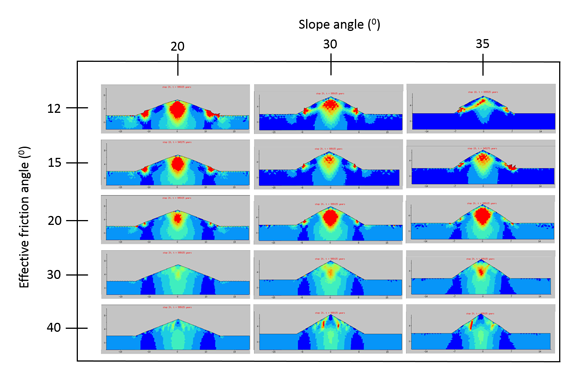 |
Fig. 4 Results of modelling of the slope affected by DSGS for strongly fractured block |
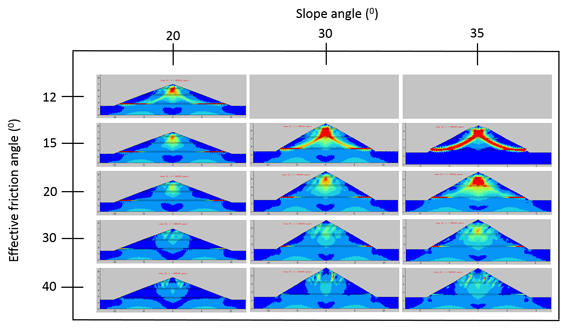 |
Fig. 5 Results of modelling slope with layer affected by DSGS for strongly fractured block |
Education
- 2012-present: PhD student at the Institute of Geological Sciences in Wroclaw, Poland
- 2009-2011: Master in Geology, University of Silesia, Department of Earth Sciences, Sosnowiec.
- 2006-2009: Bachelor in Geology, University of Silesia, Department of Earth Sciences, Sosnowiec.
< Back

